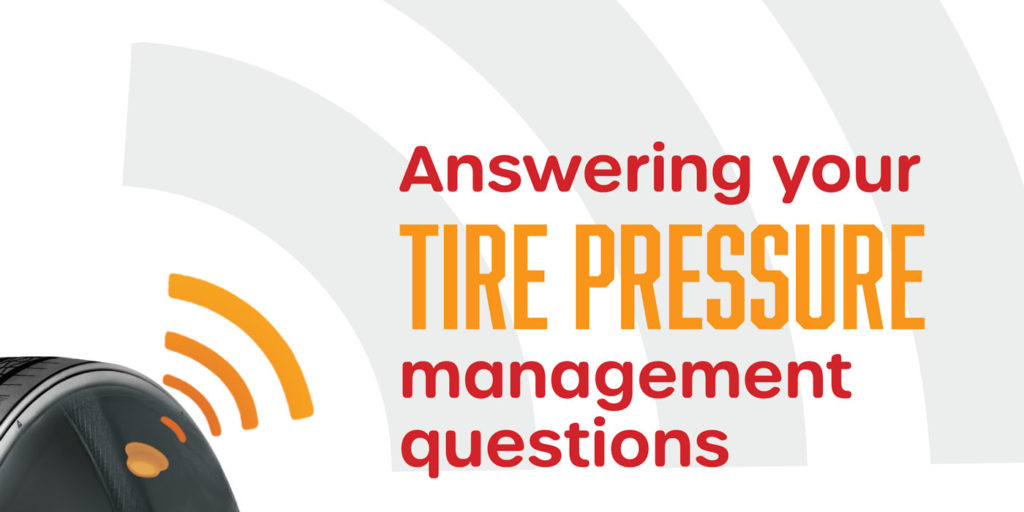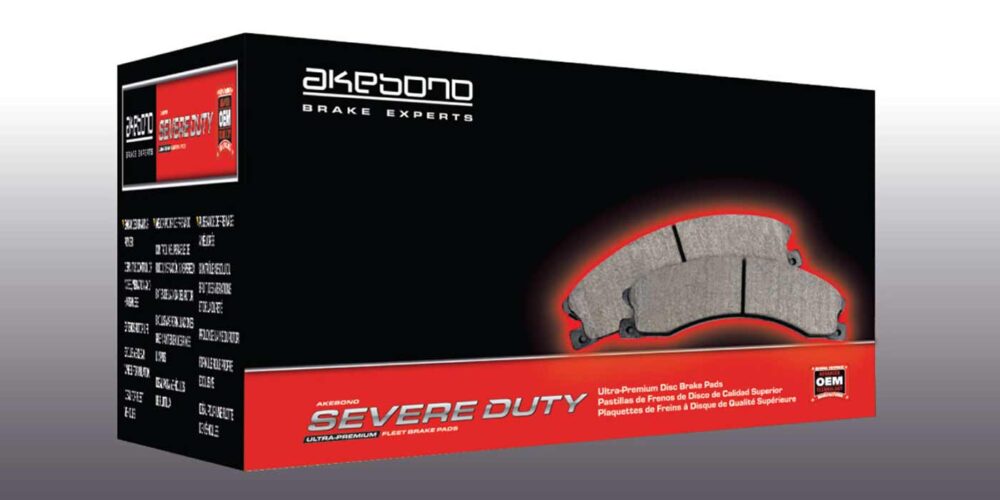You’ve heard the stats: tires are the second-highest annual cost for the average fleet, behind fuel; and a major component of that is tire pressure. But why is that, and what can you do about it? FE spoke with many major players in the truck tire industry to answer your biggest questions about tire pressure and technology.
1. Why is tire pressure management so important?
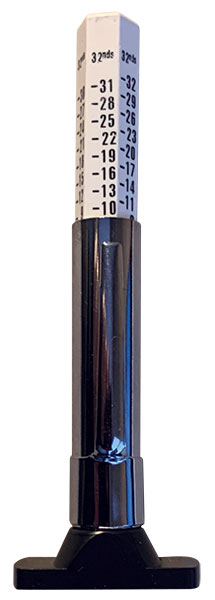
Sharon Cowart, B2B product marketing director for Michelin North America, provided an answer for this one.
“A tire’s air pressure is important because heavy truck load weights can be quite high. Tire pressure maintenance is a key component of a complete tire maintenance program,” she said. “The number of tire-related issues and roadside events will be significantly reduced by maintaining proper tire pressure inspections and ultimately, downtime on the side of the road can be reduced.
“Under-inflation is the No. 1 cause of premature tire removal,” Cowart continued. “If the tire is 20% below the recommended pressure, it must be considered flat. It should then be removed and inspected for punctures or other damage. Failure to do so may lead to unwanted downtime.”
On the other hand, she said, over-inflated tires increase the likelihood of cuts, impact breaks, punctures and shock damage resulting from the decrease of sidewall flexing and an increase in firmness of the tread surface.
“A tire that is underinflated by as little as 2% can exhibit irregular wear and other tire issues,” cautioned Helmut Keller, Continental’s head of product and brand management for commercial vehicle tires in the Americas region. “Mismatched air pressure between dual tires is also a frequent cause of irregular wear.”
According to the ATA’s Technology and Maintenance Council (TMC), compared to a tire that experiences a constant 10% under-inflation, a tire with proper air pressure delivers 15% longer tread life on its first life, and 20% longer casing life for retreading. Proper tire inflation also increases fuel economy by 1% versus a tire that is 10% under-inflated, according to the TMC.
Keeping those tires properly filled is part of an overall approach that your fleet can take to be predictive, rather than reactive, when it comes to service and maintenance.
“We’re seeing more fleets looking to pivot from reactive, interval-based service, to predictive, need-based intervention,” said Judith Monte, vice president of marketing and customer success for Aperia. “Predictive, proactive tire maintenance is a mature innovation that, unlike most major mechanical systems, is agnostic to vehicle architecture and power source, making it a prime candidate to be part of the foundation of a fleet’s predictive maintenance playbook.”
Don’t forget: Tires and wheels are the second-leading cause of vehicle-related out-of-service violations at roadside inspections, according to the Commercial Vehicle Safety Alliance (CVSA)’s annual International Roadcheck.
2. What’s the best way for me to manage my tire pressure?
Proper measurement is key.
“With the advancement in today’s radial casing, it is virtually impossible to determine if a tire is properly inflated without using a pressure gauge,” Michelin’s Cowart said.
“Periodically calibrate the gauges using a master gauge. Over time, usage conditions can cause a pressure gauge to lose accuracy beyond the 2 PSI manufacturer’s tolerance range. The time and effort required to verify gauges and to check tire pressure is time well spent. Maintain all tires at the fleet target inflation pressure based on the manufacturers’ application data book for the particular axle load.”
In addition to proper service practices, you can also make use of digital tire pressure solutions; namely, tire pressure monitoring systems (TPMS) and automatic tire inflation systems (ATIS).
3. I’ve heard of TPMS and ATIS, but what’s the difference between them?
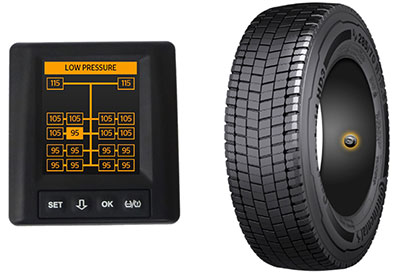
Simply put: the difference between these two systems is that TPMS monitor tire inflation, alerting drivers and fleets if it becomes too low or too high, while ATIS take it a step further and inflate the tire automatically in the event that it is needed, and are most frequently used on trailers.
“In total, roughly two-thirds of new trailers are now being equipped with ATIS,” shared Matt Brest, senior sales engineer for Maxion Wheels. “This has provided great benefit to the trucking industry by ensuring that tire pressure is maintained, but ATIS has its limitations. For example, it does not necessarily indicate to the driver or the fleet if a leak has occurred. Meanwhile, TPMS can tell the driver if there is a leak, but it cannot address the leak like ATIS. As well, the current TPMS systems can be cumbersome to install and maintain with standalone systems.
“Although only about 1% of trucks today are using TPMS, I think we are likely to see that rapidly grow in the next few years,” he continued. “Right now, most of the TPMS options for trucks include TPMS sensors in valve stem caps and rim bands. However, it seems likely that an integrated TPMS system in the valve like that used in automotive applications will become available as well.
“There is a place for TPMS and ATIS and most likely they will both be a part of the solution for fleets going forward to improve safety and uptime for the fleet as well as improving fuel economy and tire life.”
There are also some systems that serve as something of a hybrid between TPMS and ATIS.
“These systems offer sort of a best-of-both-worlds version of each system’s benefits and can provide individual wheel end feedback even if the tractor or power unit is not attached,” explained Bill Hicks, SAF product manager for SAF-Holland.
“The latest trend is to combine several technologies—TPMS, (ATIS) and telematics—in order to create a very robust tire maintenance and monitoring solution that provides fleets with visibility of their tire problems and keeps punctured/under-inflated tires running safely until they can be addressed,” said Peggy Fisher, president of TireStamp Inc. “TPMS and telematics ensure that communication of tire problems is made so that tires do not run constantly being deflated/inflated, which can damage tires. The TPMS also advises which tire has a problem and eliminates the need to check all the tires on the vehicle.”
4. What can TPMS and ATIS do for me?
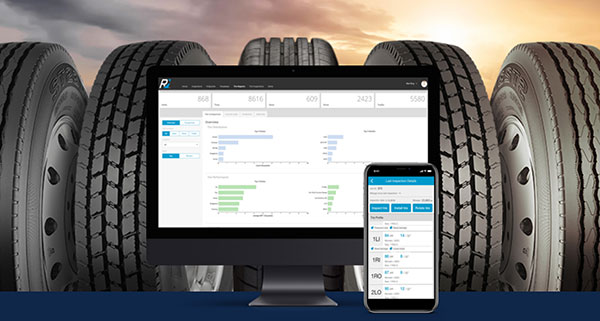
Howard Fromm, senior product manager for the Meritor Tire Inflation System, cited studies from the Federal Motor Carrier Safety Administration (FMCSA) and U.S. Environmental Protection Agency (EPA) showing a 10% longer tire life with tire inflation systems. An FMCSA real-world study on tire inflation systems, he also shared, showed a 1.4% average improvement in fuel economy per vehicle.
Craig Smith, marketing manager for Pressure Systems International (P.S.I.), noted that some fleets may feel that they don’t need ATIS because they perform daily tire pressure checks. But, he noted, that 1.4% increase cited in the FMCSA study includes daily pressure checks—in other words, that increase is the reward for going above and beyond those checks.
He also pointed out that punctures do happen. “In many cases,” he noted, “this happens in a yard or secondary road. Having ATIS will help prevent a significant air loss during the trip, prior to its next pressure check.”
There are other maintenance benefits as well. “A digital system also offers easier routine inspections for a technician team, allowing the data to be leveraged and used to evaluate tire issues in real time, when a tire needs immediate attention,” said Mike Schwanzl, director of field sales and service for Dana. “Likely the greatest value in a digital solution is that it can identify tire-related issues during regular preventive maintenance before they become severe in nature.”
Read more about how you can save with tire pressure systems here.
5. How do I ensure that my tire pressure management program remains cost-effective?
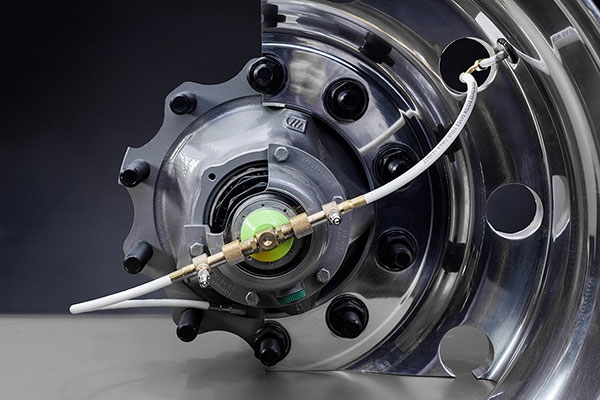
We get it: it’s a tough time out there for a lot of businesses, fleets included, and you don’t want to be spending more money than you have to.
“The biggest question that fleets always ask is how to improve tire pressure management while keeping it cost-effective,” Continental’s Keller said. “Most fleet managers are aware of the importance of proper tire pressure: 15% longer tread life on the first tire life, and 20% longer casing life for retreading. But they may struggle with the practical implementation of a tire pressure management program. When done manually, tire by tire, it is a time-consuming process. Manual tire gauges are frequently inaccurate, so fleets may be getting incorrect data even if they spend the time. Inside dual tires whose valve stems aren’t aligned properly are quite literally impossible to check. All of those concerns disappear with a digital tire monitoring system.”
So there is an ROI to be had here; but, you may be asking, how soon will I see it?
“Every fleet is different, but some of our customers have identified enough flat or under-inflated tires immediately upon installing a Continental tire monitoring system to achieve ROI,” Keller answered. “One road failure can cost the equivalent of three months of ContiConnect monitoring, which tracks tire pressure for all vehicles in the fleet terminal, whether it’s trucks or buses. And for long-haul drivers, one road failure can cost the equivalent of an entire ContiPressureCheck TPMS, our single vehicle monitoring solution.”
6. What will the next generation of TPMS and ATIS look like?
TPMS and ATIS are both relatively new technologies in terms of being widely adopted by the trucking industry. So what will the tire pressure systems of the future look like?
“Next-generation tire pressure management technology is built for the busy fleet manager who wants to ensure their trucks and trailers are in prime condition,” answered Collin Shaw, director of marketing and communications and business development for ZF Commercial Vehicle Controls Systems. “These systems are flexible, customizable, user-friendly and connected.”
“We’re in the era where some tire inflation systems are actually tire management systems, enhancing vehicle safety and providing fleets with confidence and security that they are maximizing tire life, vehicle efficiency, and uptime,” said Bill Hicks, SAF product manager for SAF-Holland. “For instance, systems like ours can now increase tread and tire casing life, lead to safe and reliable tire performance, enhance fuel economy and GHG reduction as well as reduce tire and vehicle maintenance. To further increase tire life, future ATIS will revolutionize tire inflation by providing automatic adjustment of tire pressure based on trailer axle loads.”
When asked how tire pressure solutions will advance into the future, Matt Wilson, Hendrickson controls business unit director, noted that it is important that these systems be able to interface with increasingly intelligent trailers.
“The need for more data regarding vehicle status seems to grow every day,” he said. “Fleets are becoming more sophisticated about the data collected and how it is used to increase operational efficiency.”

